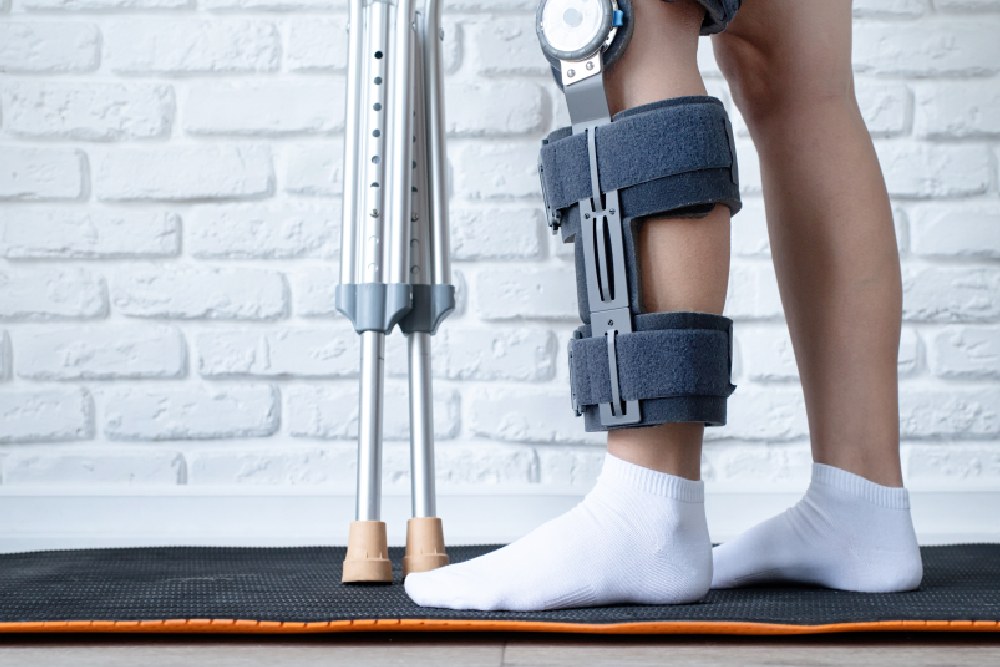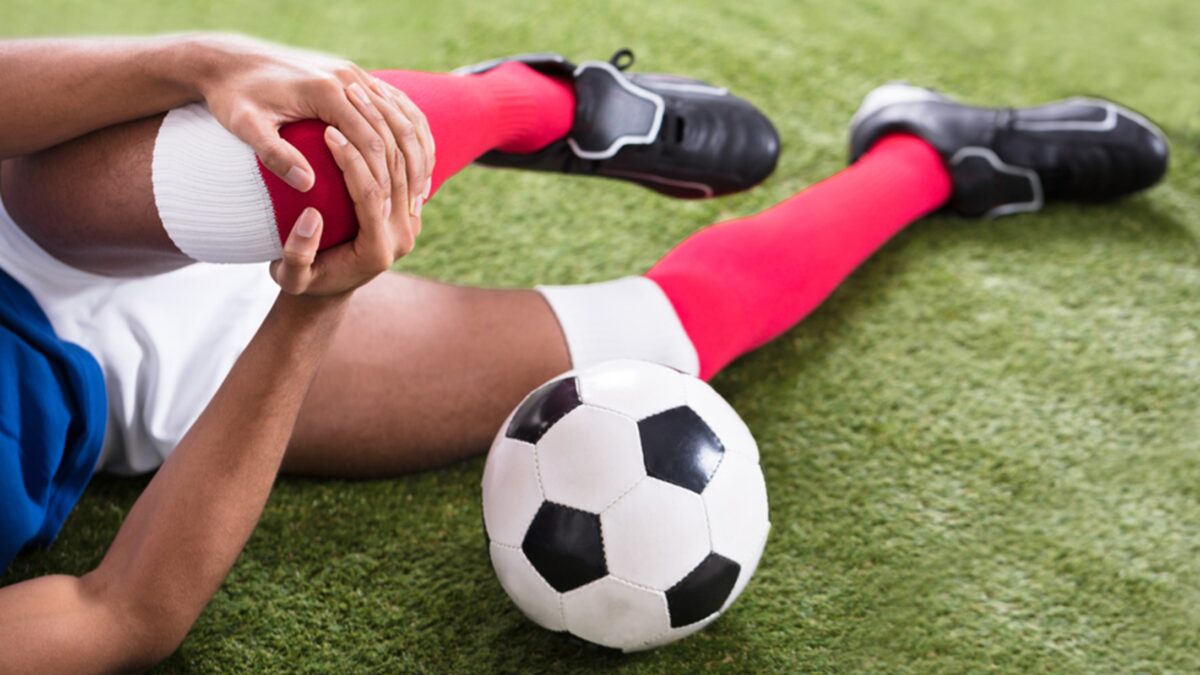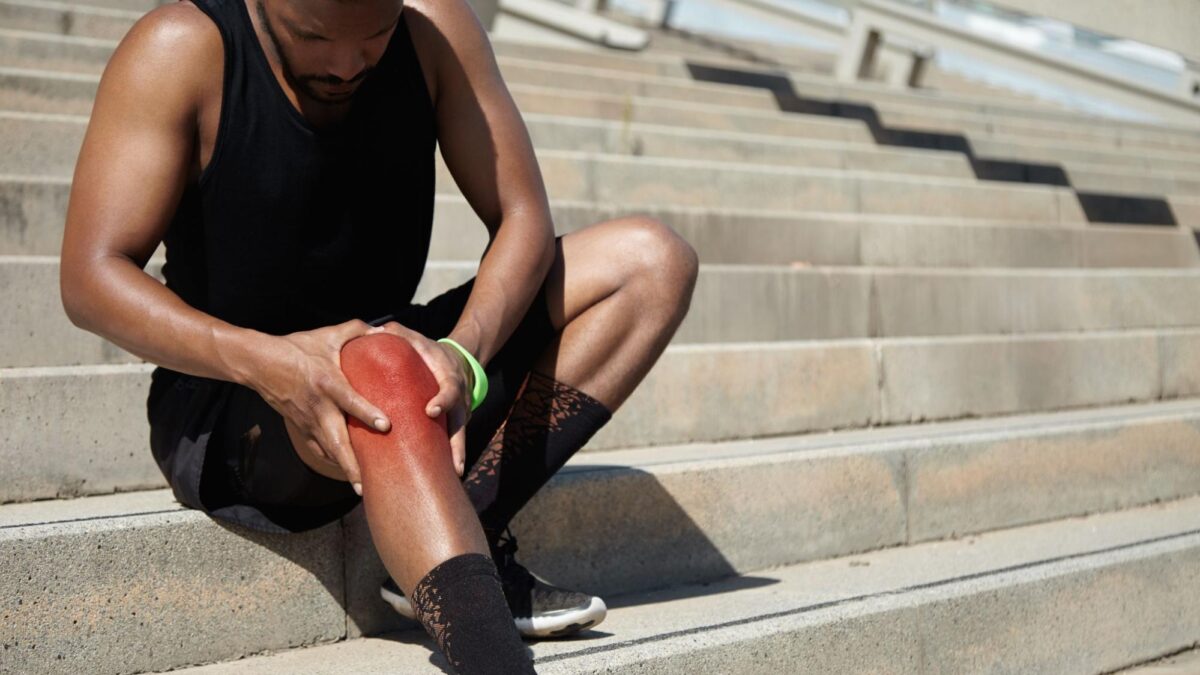Written by Dr Gowreeson Thevendran, MBChB (Bristol), MRCS.Ed, Dip. Sports Med.Ed, FRCS.Ed (Trauma & Ortho.), FAMS (Singapore)
Table of contents
- What is an ACL and What Does it Do?
- What Is An ACL Tear?
- Symptoms of an ACL Tear
- Diagnosing ACL Tears: ACL Tear Grades
- Non-Surgical ACL Injury Treatments
- ACL Full-Form Surgery
- How Much Does an ACL Surgery Cost?
- Recovery Period for ACL Reconstruction
- When to Do ACL Surgery
- Who is Eligible for an ACL Surgery
- Potential Risks or Complications from ACL Reconstruction Surgery
- Tips for Preventing an ACL Tear
- Why Choose OrthofootMD?
- Dr Gowreeson Thevendran
- Frequently Asked Questions about ACL Tear & Reconstruction Surgery
What is an ACL and What Does it Do?
The knee joint, a complex structure where the femur (thighbone), tibia (shinbone), and patella (kneecap) converge, relies on a network of ligaments for stability. Among these, the Anterior Cruciate Ligament (ACL) is a strong band of tissue that plays a pivotal role. It runs diagonally within the knee.
The ACL's primary function is twofold: it mitigates the risk of the tibia sliding too far in front of the femur, and it provides crucial rotational stability to the knee. This ligament is particularly vital during activities demanding agility and dynamic movement, such as walking, running, jumping, pivoting, and cutting, making it susceptible to injury in sports that involve these actions.
What Is An ACL Tear?
An ACL injury refers to damage to the ACL, which can manifest as either an overstretching of the ligament or a tear. The ACL can be injured or torn in several ways, often during activities that involve sudden pivoting or twisting motions, such as those common in sports like football, basketball, and soccer.
An ACL tear, especially, involves the rupture of the ACL. This injury can range from partial tears, where only some ligament fibres are damaged, to complete tears, where the ligament is fully ruptured. A complete tear often leads to instability in the knee, typically signalled by a noticeable "pop" at the time of injury, followed by swelling. However, it's important to note that some individuals may experience minimal pain despite having a significant ACL injury.
Regardless of the severity, an ACL tear requires evaluation by an orthopaedic specialist to determine the appropriate treatment.
Symptoms of an ACL Tear
Following an ACL injury, you may experience the following symptoms:
- Pain in the centre of your knee
- Pain in the back of your leg
- Swelling around the knee joint
- Instability when walking or changing direction quickly
- Difficulty squatting down without putting weight on your knees
If you suspect an ACL sprain or tear, it is crucial to seek immediate medical attention. This allows an orthopaedic surgeon trained in addressing orthopaedic injuries to assess the full extent of your condition.
Diagnosing ACL Tears: ACL Tear Grades
An orthopaedic specialist will diagnose your ACL injury through a history review and physical examination.
During the examination, the specialist assesses the knee's range of motion and stability and checks for an ACL tear. They will also examine other structures within the knee, such as the collateral ligaments, will be examined, as ACL tears often occur in conjunction with damage to these structures.
You may undergo X-rays to identify any fractures. In cases where history and physical examinations are inconclusive, magnetic resonance imaging (MRI) may be required. MRI exams further evaluate the state of the cartilage and meniscus tissue, aiding in determining the appropriate treatment.
ACL injuries are categorised into three grades based on the extent of the damage:
Grade 1
Grade 1 ACL injuries are the mildest, with the ligament suffering minor damage from overstretching but not tearing. The ligament maintains enough structural integrity to keep the knee joint relatively stable.
Grade 2
At this level, the ACL has a partial tear, indicating the ligament's fibres have been overstretched to the point of causing noticeable loosening. This reduces the ligament's ability to stabilise the knee joint fully.
Grade 3
Grade 3 is the most severe ACL injury category, characterised by a complete tear or detachment from the bone. Due to the total loss of ligament integrity, maintaining knee stability is significantly challenging.
Non-Surgical ACL Injury Treatments
An ACL specialist will tailor your treatment based on your symptoms, examination results, sports and activity goals, and any remaining growth in your growth plates.
RICE: Rest, Ice, Compression, and Elevation
Non-surgical treatment is appropriate for Grade 1 ACL injuries, typically sprains. Rest allows natural healing, while ice and compression help manage inflammation and swelling. Elevation of the affected leg can further aid in reducing swelling. This approach effectively manages cases where the ACL is mildly overstretched without tearing.
Physical Therapy
Grade 2 ACL tears, or partial tears, often respond well to physical therapy. A comprehensive rehabilitation programme aims to strengthen surrounding muscles, improve joint stability, and increase range of motion. Through targeted exercises, functional movement, and proprioceptive training, knee stability may be restored without surgery.
ACL Full-Form Surgery
ACL reconstruction surgery is crucial for addressing complete ACL tears and stabilising unstable knees, thereby preventing long-term joint issues and eliminating the need for a knee brace.
During the surgery, after administering general anaesthesia to ensure you're asleep and comfortable, an ACL specialist employs knee arthroscopy techniques to address the damaged ligament. This involves a few small incisions around the knee for both the removal of the damaged ACL and the placement of the graft. The graft used to reconstruct the ACL — chosen from autografts (the patient's own tissue), allografts (donor tissue), or a hybrid of both — is carefully selected based on the patient's age, activity level and overall health, ensuring a personalised treatment plan.
Typically taking about two hours, the process might conclude with applying steri-strips to the incisions, allowing many patients to return home the same day. This approach aims to restore stability to the knee, catering to each individual's specific needs.
Autograft
Procedure: In an autograft procedure, the surgeon harvests tissue from the patient's own body, such as a tendon from the hamstring or patellar tendon, to replace the damaged ACL.
When Used: Autografts are often recommended for young, active individuals or athletes due to their lower risk of rejection and strong fixation, which are preferred for patients who may place high demands on the knee post-recovery.
Allograft
Procedure: An allograft uses donor tissue, typically from a cadaver, to replace the torn ACL. This method avoids the need to harvest tissue from the patient, potentially reducing recovery time and pain at the donor site.
When Used: Allografts may be chosen for older patients or those with lower activity levels. They are also considered when a patient prefers not to have tissue harvested from their own body or in cases where multiple ligaments need repair, minimising the amount of surgical intervention on the patient's body.
Hybrid Graft
Procedure: A hybrid graft combines both autograft and allograft tissues to reconstruct the ACL. This approach may utilise the patient's tissue reinforced with donor tissue, offering a balance between the benefits of both types.
When Used: Hybrid grafts are utilised in complex cases where the patient's tissue alone may not be sufficient for a robust repair or to enhance the strength of the repair in patients with significant knee instability or those undergoing revision surgery. This method aims to maximise the repair's durability while considering the patient's specific needs and circumstances.
How Much Does an ACL Surgery Cost?
The cost of ACL surgery in Singapore can vary depending on several factors, such as the type of graft used, the surgical approach, the surgeon's fees, and the hospital chosen. In general, the cost typically ranges from S$25,000 to S$30,000. It's advisable to consult with your orthopaedic surgeon to get a personalised estimate based on your specific circumstances and insurance coverage.
Recovery Period for ACL Reconstruction
Recovery after ACL surgery is a multi-stage process that typically spans several months. The ACL surgery recovery time and the specifics of each phase can vary based on individual factors and the surgical approach.
General overview of the recovery process:
| Phase | Key Activities Goals |
| Immediately after surgery |
|
| First few weeks after surgery |
|
| First few months after surgery |
|
| Return to sports |
|
Do note, however, that each recovery timeline is personalised, and it's essential to consult with your orthopaedic surgeon and physical therapist throughout the process to adjust activities according to your recovery progress.
When to Do ACL Surgery
ACL surgery is generally recommended for individuals with a complete ACL tear, especially if they experience functional instability in the knee, are active in pivot-based sports, or belong to a younger age group. The timing for surgery is typically recommended within a window of 3 to 6 weeks post-injury. This allows for the initial inflammatory response to subside and facilitates pre-surgical physical therapy aimed at aiding the knee's range of motion.
Early surgery, particularly in cases where the knee's range of motion is limited, can increase the risk of arthrofibrosis, a condition characterised by excessive scar tissue formation and subsequent joint stiffness.
Conversely, delaying surgery beyond three months can heighten the likelihood of developing irreversible damage to the cartilage or menisci due to ongoing knee instability. In addition, postponing ACL reconstruction for extended periods might not only increase the risk of secondary injuries to the knee but also elevate the likelihood of needing revision surgery in the future.
The ideal timing for ACL reconstruction is determined through a careful assessment by an orthopaedic surgeon, taking into account various factors:
- The presence of concomitant injuries may require prior attention.
- The extent of swelling and inflammation in the knee.
- The patient reported a level of pain and discomfort.
- The patient's current range of motion and muscle control in the affected knee.
Potential Risks or Complications from ACL Reconstruction Surgery
ACL reconstruction carries inherent risks and complications, as does any surgery. Understanding these risks is vital to making an informed decision. Potential issues include infection, blood clot formation, and variations in knee function post-recovery. A detailed conversation with your orthopaedic surgeon is essential to assess these risks. They will tailor advice to your situation, employ strategies to minimise risks and support your journey towards successful rehabilitation.
Tips for Preventing an ACL Tear
While ACL tears can be unpredictable, certain proactive measures can help mitigate their risk:
- Maintain Year-Round Fitness: Consistent exercise helps strengthen the muscles supporting your knees, enhancing their resilience against sudden movements and potential injuries.
- Focus on Proper Movement Patterns: Pay close attention to your form and technique, especially during activities that involve jumping, landing, or changing direction. Avoid landing with stiff legs and prioritise controlled movements with proper knee and hip alignment.
- Avoid Overexertion: Recognise the signs of fatigue and avoid pushing yourself beyond your limits.
- Strengthen Key Muscle Groups: Target exercises that strengthen your hamstrings and quadriceps, the major muscle groups that control knee movement. Strong muscles provide better support and stability to the knee joint, minimising the strain on the ACL during dynamic activities.
Why Choose OrthofootMD?
At OrthofootMD, our orthopaedic foot and ankle specialist specialises in providing comprehensive care for lower limb orthopaedic conditions, including ACL injuries and knee cartilage repair, amongst others. Our team, led by Dr. Gowreeson Thevendran, is dedicated to delivering personalised treatment plans and guiding patients through every step of their recovery journey. We combine expertise in ACL surgery with a commitment to patient education and support.
Our focus on lower limb orthopaedics translates to an understanding of the complexities of ACL injuries and their impact on knee function. With a patient-centric approach, we tailor treatment plans to individual needs and goals, utilising surgical techniques and evidence-based rehabilitation protocols.

Dr Gowreeson Thevendran
MBChB (Bristol), MRCS.Ed, Dip. Sports Med.Ed, FRCS.Ed ( Trauma & Ortho. ), FAMS (Singapore)
Dr Gowreeson Thevendran is an orthopaedic surgeon in Singapore who specialises in lower limb orthopaedic conditions, trauma, and fracture surgeries of both the upper and lower limbs. He received his medical education from the University of Bristol and completed his surgical training in the UK and Canada. Before establishing his private practice, he served as Chief of Foot & Ankle Surgery, Department of Orthopaedics at Tan Tock Seng Hospital, Singapore.
Dr Gowreeson Thevendran’s Qualifications and Awards:
- Bachelor of Medicine and Surgery, University of Bristol, England
- Fellow of the Royal College of Surgeons, Edinburgh
- Diplomate Faculty of Sports and Exercise Medicine, Royal College of Surgeons Edinburgh
- Fellow of the Academy of Medicine, Singapore
- SICOT PIONEER Founders Award 2020
- 2015 European Foot & Ankle Society ‘Best Podium Presentation’ Award
- 2013 Singapore Orthopaedic Association Junior Travelling Fellowship
- 2012 NHG Critical Talent Special Recognition Award
- 1998 Enid Lindt Prize in Clinical Surgery
- 1995 Public Services Department Full Medical Scholarship
Languages Spoken:
- English, Malay, Tamil
COMMON ORTHOPAEDIC CONDITIONS WE TREAT
GENERAL
Frequently Asked Questions about ACL Tear & Reconstruction Surgery
The recovery time between traditional ACL surgery and minimally invasive techniques generally does not significantly differ. Factors affecting recovery include the individual's health, the surgical approach, the extent of the ACL injury, and adherence to post-operative care and rehabilitation protocols.
While ACL reconstruction surgery is commonly recommended for complete tears, it is not always mandatory. Non-surgical options may suffice for those with a less active lifestyle or minor tears willing to commit to intensive rehabilitation. However, surgery is often suggested to avoid further joint damage for individuals keen on returning to high-demand activities.
ACL tears can affect anyone, not just athletes, and may sideline an individual for months. These injuries commonly occur due to:
- Sudden stops or changes in direction
- Direct impacts, such as collisions with another player
- Landing awkwardly from a jump
Several factors can elevate the risk of an ACL sprain or tear:
- Participation in contact sports like football, soccer, and basketball
- Recreational activities, including skiing
- Insufficient conditioning before engaging in intense exercise or sports
- Execution of improper movement patterns
- Wearing ill-fitting footwear
- Using worn-out or poorly maintained sports equipment
Due to the difficulty of healing an ACL independently, it is essential to consult an orthopaedic specialist or sports injury doctor in Singapore for proper care and treatment.
Untreated ACL tears can lead to chronic instability, ongoing discomfort, and a heightened risk of additional knee injuries. The body might compensate for a torn ACL to some extent, but this compensation can exacerbate joint issues over time. Prompt consultation with an orthopaedic specialist is crucial to prevent these adverse outcomes and maintain joint health.
While walking on a torn ACL is technically possible, it is generally advised against. A torn ACL compromises the knee's stability, risking further damage and injury during weight-bearing activities. Walking without the support of a brace or crutches may worsen the condition and increase additional injury risks.
An ACL injury heightens the risk of developing osteoarthritis in the knee, a risk that persists even after ligament reconstruction surgery. Factors influencing the onset of osteoarthritis include the severity of the injury, any concurrent knee injuries, and your physical activity levels post-treatment. Consulting with your ACL surgeon for a long-term management plan is crucial.
First-degree ACL tears, characterised by mild ligament stretching without actual tearing, can sometimes heal without surgical intervention. Nevertheless, the healing likelihood without surgery is generally lower for such injuries. Non-surgical treatments like rest, physical therapy, and bracing might be recommended to address the pain and manage symptoms. Despite these measures, the potential for ongoing instability exists, underscoring the importance of continuous monitoring.
Coverage for ACL surgery in Singapore may vary by the procedure and your specific policy. Patients are advised to consult the clinic to verify MediSave eligibility and insurance coverage.
Related posts
Clinic Location
OrthofootMD@Novena
- Mount Elizabeth Novena
38 Irrawaddy Road #05-42 Mount Elizabeth Novena Specialist Centre Singapore 329563
OrthofootMD@Mount Alvernia Hospital
- (Mount Alvernia Hospital)
820 Thomson Road #01-01/02 Mount Alvernia Medical Centre A Singapore 574623


